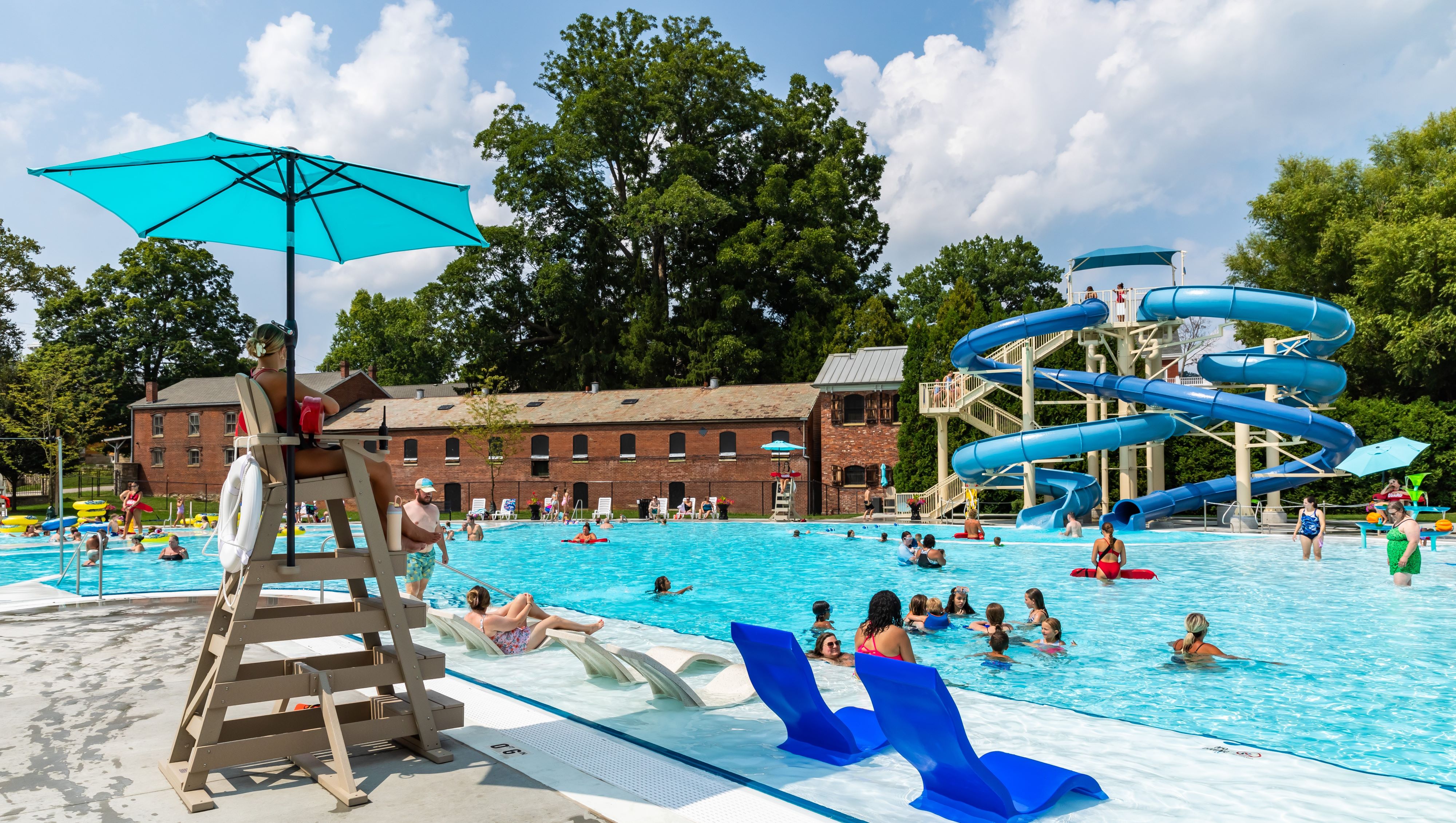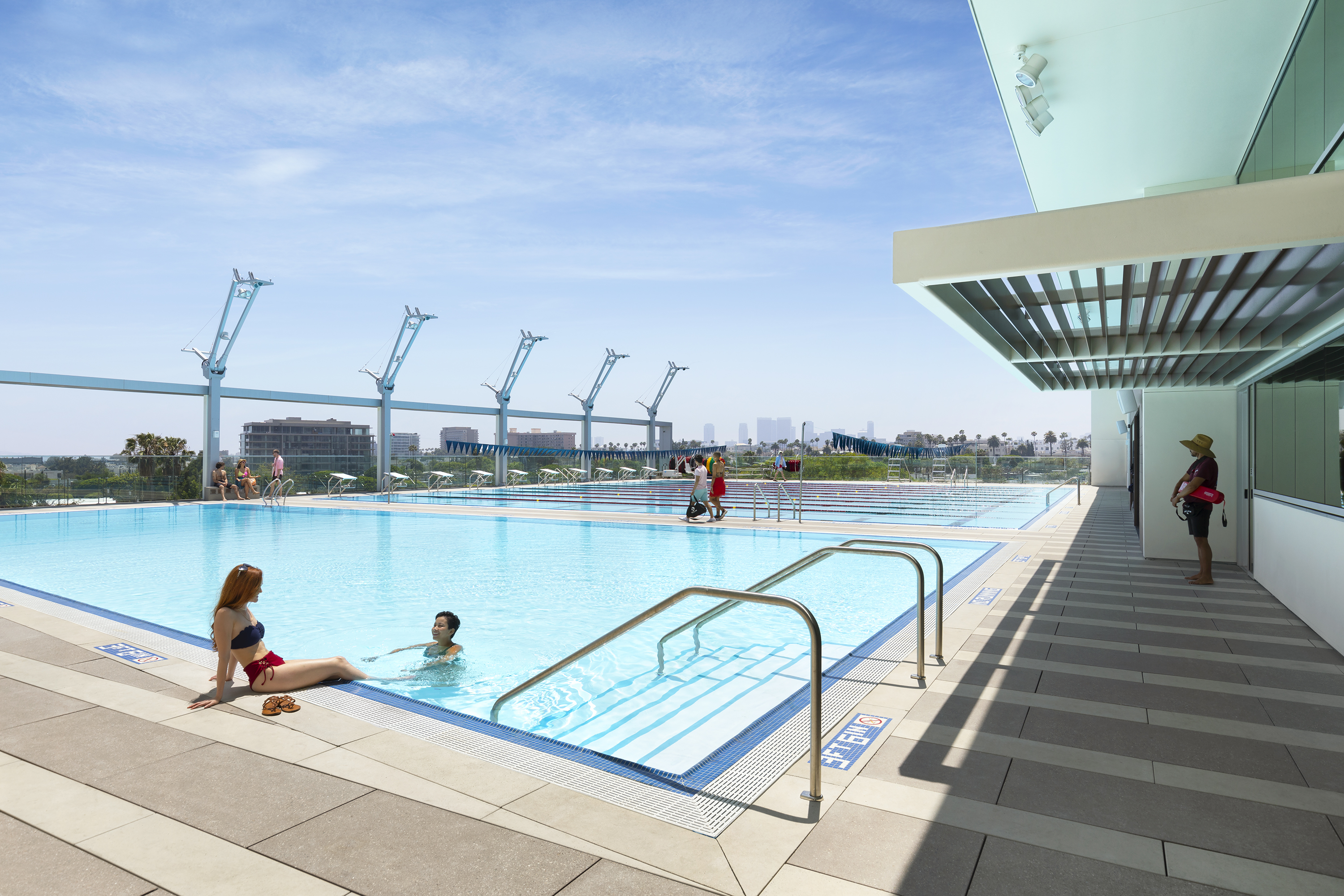THE CANVAS: Subzero ground freeze, Hudson Valley vistas, sloped substrata
THE PALETTE: Tan and taupe tile, 40 tons of natural rock
THE MASTERPIECE: Playful light and waterworks, out-of-the-box ingenuity, perched paradise
Ask Michael Giovanone’s contemporaries what they think of his contributions to the advancement of vinyl-liner pool design and the response is overwhelmingly positive.
“I think ‘innovative’ is the right word for what Mike does,” says Lew Akins, a Belton, Texas-based pool builder. That’s not exactly idle flattery coming from the builder who was one of the first to introduce the vanishing-edge pool to America.
After 33 years of installing vinyl-liner pools, Giovanone is still trying to push the design envelope. He recently garnered a lot of attention for building pools with a radiant in-floor heating system mostly used to heat driveways, patios and indoor flooring. What is the key to his ingenuity? Imagination.
“In my eyes, there is nothing a gunite builder does that we can’t do with a vinyl-liner pool,” says Giovanone, president/owner of Concord Pools Ltd. in Latham, N.Y. “Even in my severe Northern climate, where it can get 40 below zero with 4 feet of ice and frost, there are no limitations.”
That same sense of possibility played into this upstate New York project. The client is a prominent custom home builder who works with Concord Pools on more than 80 projects per year, so the pressure to perform was evident. If the pool was anything less than spectacular, Giovanone stood to lose an important business contact.
The owner wanted an environment that incorporated these features: a radius negative edge, one of Giovanone’s radiant heat systems, a spillover spa, a large rock waterfeature and a synchronized light show. “We wanted to involve all the senses,” Giovanone says. “Not only are they going to use this pool to swim, but it has to be enjoyable to look at and listen to.”
Moving heaven and earth
When he set foot in the client’s backyard, Giovanone was initially perplexed by the 14-foot, sloped drop-off that the owner intended to use as the pool site.
“I remember walking into the yard and asking [the homeowner], ‘You want it where?’” he recalls.
The crew hauled in 500 cubic yards of earth for backfill — a challenge all its own with only 10 feet of access into the yard. A 40-foot-long, 17-foot-high poured radius concrete retaining wall was built to hold the new soil.
“The pool is solid, yet it is literally floating in the air, being supported by the retaining wall,” Giovanone says. “The main drains are actually 6 feet above virgin ground.”
The top 3 feet of the retaining wall also serve as the base for the negative edge’s weir wall. At the owner’s request, the weir was adorned with imported porcelain tiles in tans and taupes.
But the in-floor radiant heat system is perhaps the project’s most unique feature. The system uses a series of polyethylene, cross-linked tubing imbedded in the concrete floor below the pool base. The tubes pipe warming antifreeze through the concrete floor, which in turn, radiates heat into the water.
No thermal layering occurs in the heated pool water, according to Giovanone. Instead, your shoulders experience the same water temperature as your toes. The device, he points out, also saves on energy costs by running independently of the pool’s circulation system.
Another of his masterstrokes was how he seamlessly integrated the acrylic spa shell into the design without making it an eyesore. “I have an inherent dislike for spas around pools that look like they fell off the back of a truck,” Giovanone says. “It doesn’t do anything for the public’s perception of vinyl-liner pools.”
To blend the spa into the design, he built a bluestone skirt and band around the shell. The spa’s spillway draws the viewer’s gaze toward the motion of the water and away from the shell.
“A good rule of thumb for these installations is that it should cost the builder more to surround the spa with the finish than the feature itself costs,” Giovanone says.
Because the homeowner’s hectic schedule only allows him to use the pool early in the morning or at night for entertaining, he requested “heavenly” lighting and “tranquil” waterfeatures. “When I [illuminate] a waterscape, I never want to see the source of the light,” Giovanone says. “I want people to think it’s a reflection of the moon.”
To that end, he synchronized the multiple underwater, color-changing lights in the pool with the weir wall’s fiberoptics and the two laminar jets streaming into the pool. Six more lights were placed in the waterfeature.
Building the triple-tiered waterfeature presented another challenge. Giovanone’s team laid 40 tons of natural rock one at a time. Because it stretched more than 35 feet and required 400 gallons of water in transit, circulation between the waterfeature, the pool and the negative edge was a considerable concern.
Five drains were installed in the negative edge’s catch pool to maintain a flow rate of 150 gallons per minute. Any less than this amount and the catch basin might vortex and dry the plumbing lines.
Giovanone remembers how it felt when he started up the $225,000 project after construction. “The homeowner was standing next to me when I turned on the water. As the water started to flow, I was thinking, ‘Where’s my clear path out of the yard?’
“But when the water broke evenly over that 34-foot weir, it was an endorphin rush,” Giovanone adds. “It’s a feeling that brings pride to your work. We live for that challenge.”



